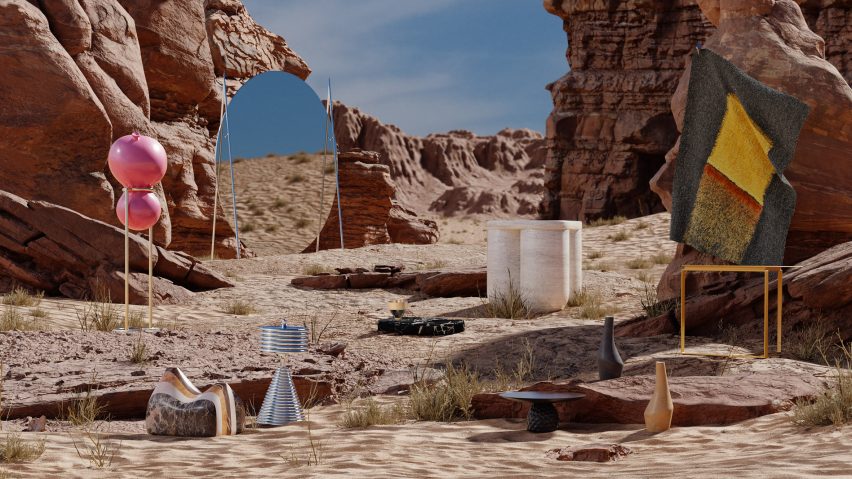
Tradition and playfulness meet in Departures collection of Jordanian design
A vase that echoes the colours of Petra and a hot pink piggy bank shaped like a squeezed balloon are among the objects in the Departures collection of Jordanian collectible designs from gallery Adorno.
Departures features the work of 10 design studios, working with different materials and processes but all exploring the intersection between the traditional and the contemporary in Jordanian design.
The collection was curated by Amman Design Week co-founder Rana Beiruti, who wanted to challenge preconceptions that design from the region was all about "very traditional crafts and geometric patterns".
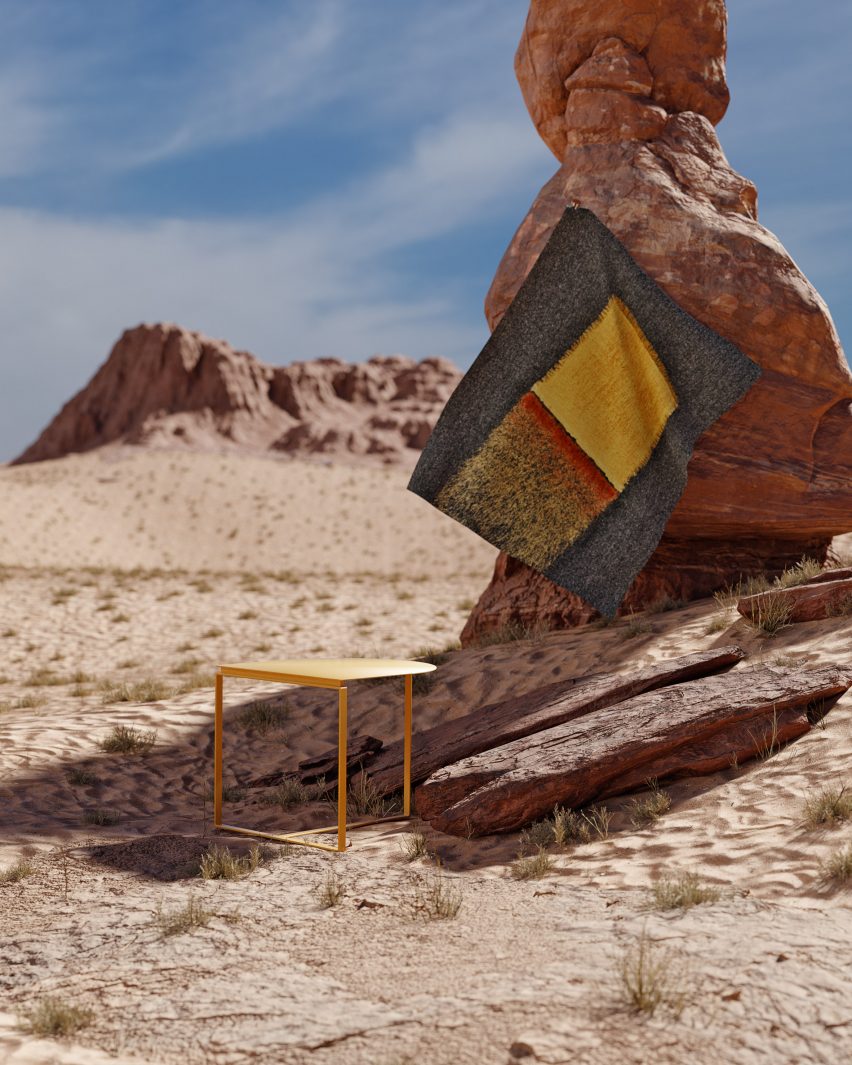
"While the collection draws inspiration from the traditional techniques that define design in Jordan, it also shows a more contemporary side of Jordanian aesthetics that are inspired by our landscape and surroundings, where the designers have produced new forms that are fluid and curvilinear," Beiruti said.
"I wanted to show the capabilities of designers in Jordan in manipulating form and material," she added.
This mix of influences is evident in the Petra vase, part of the Kutleh repurposing project by architect Rula Yaghmour. It is made of layers of waste stone with colours that evoke the cliffs around the ancient city of Petra, and it has a sinuous form that marks a contemporary approach to traditional stone sculpting.
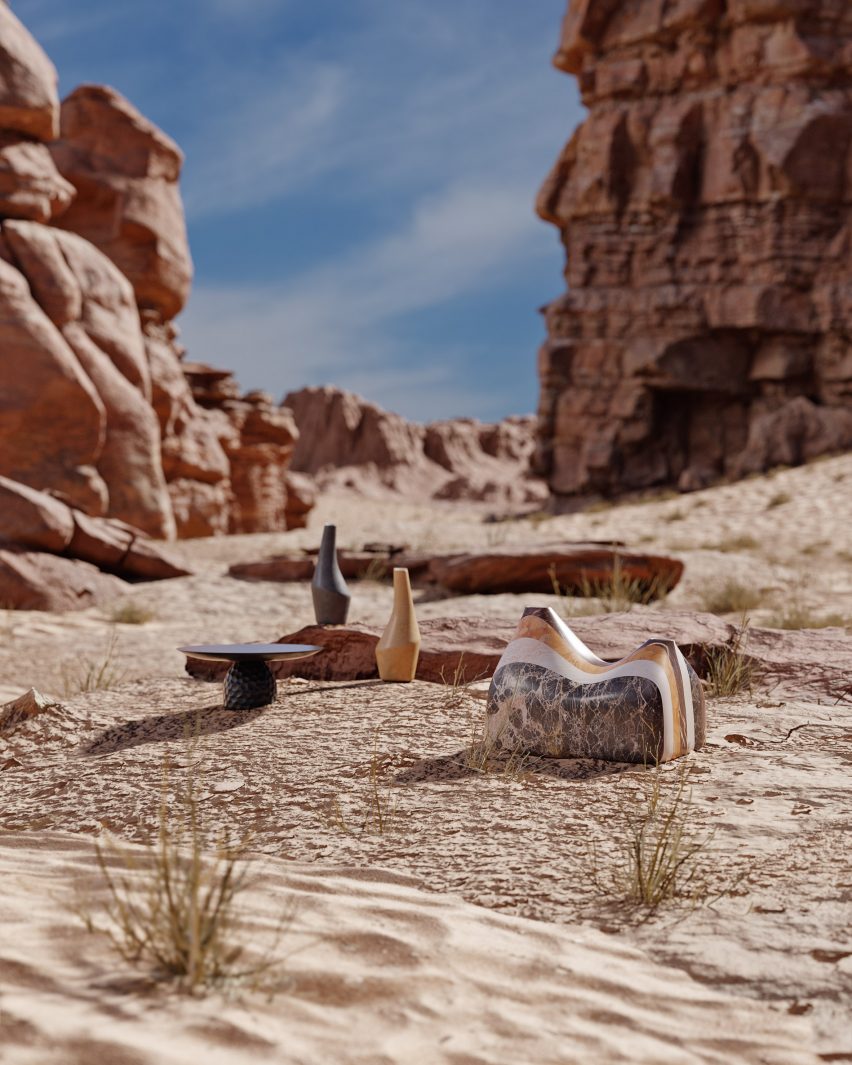
Landscape-inspired forms also feature in the Jarra carafe by Ammani studio Twelve Degrees. The designers wanted to revive the lost practice of cooling water through clay vessels, which was phased out when food safety standards required ceramics to be glazed but can now be reattempted with special glazing techniques.
The earthiness of these objects is offset by ones that Beiruti says are "light, fun and playful" – for instance, the brass and ceramic Money Balloon by Ahmad Jarrar, which uses ancient materials but applies them to create a rounded pink object that references both piggy banks and balloons.
There is also the decidedly space-age aluminium Jupiter coaster set by Andre Mcheileh, which the designer describes as "an intergalactic statement coasterpiece".
Jupiter was made by a local artisan who manually turned each of its parts on a mechanical lathe. Like all of the works in Departures, its makers are harnessing the expertise of Jordan's craftspeople and attempting to secure a future for its heritage industries.
According to Beiruti, this approach is a defining characteristic of the contemporary Jordanian design scene, as are environmental concerns driving the use of local and sometimes upcycled materials.
"The use of local materials is partly a result of necessity given global market conditions, but more importantly it's an intentional drive towards more sustainable practice," she told Dezeen.
"It's partly about reclaiming a connection with the land which has been lost for a generation. The earth itself is a great source of inspiration and potential for research."
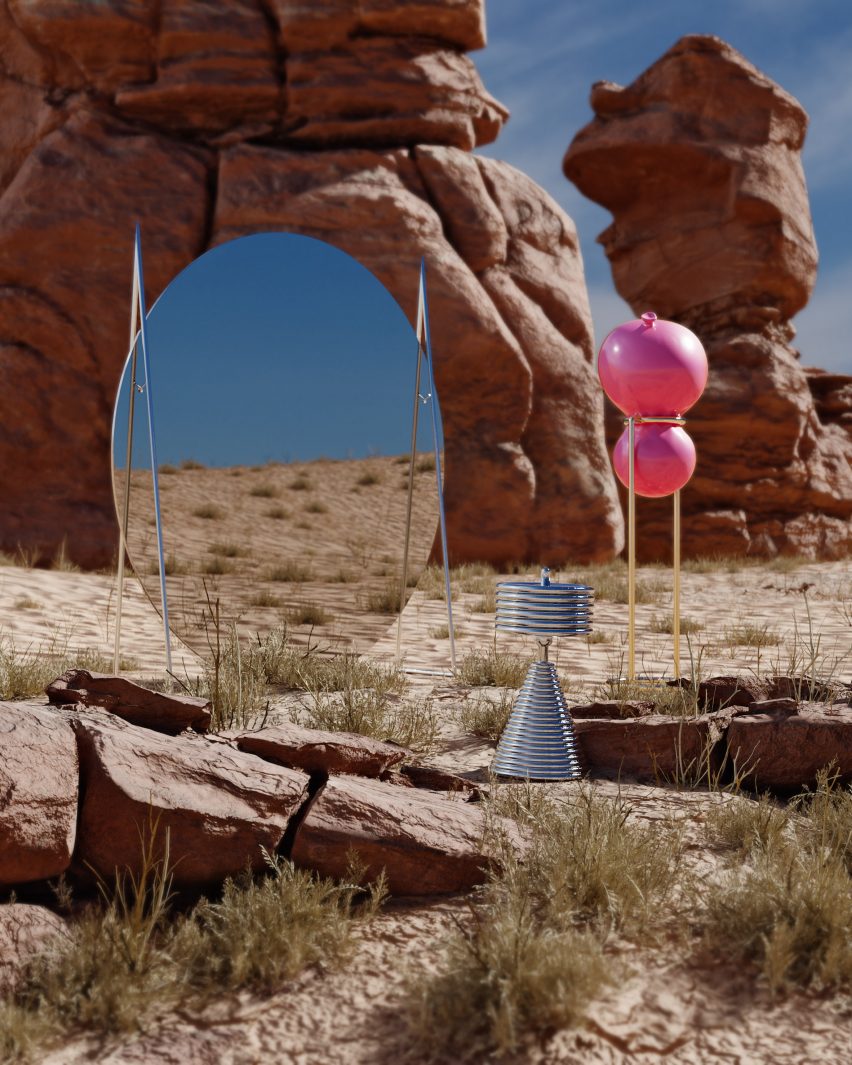
The Departures collection also encompasses a gong-like suspended mirror by Far Flung, a carved marble candle holder by In Doi Doi, a soft-shaped stone side table by Suli, a chiselled wood cake stand by SNC Design Studio, a hand-felted textile wall-hanging by Ishraq Zraikat and a light, bright yellow metal coffee table by Opus Design Collective.
It includes both existing designs as well as new ones created exclusively for the collection.
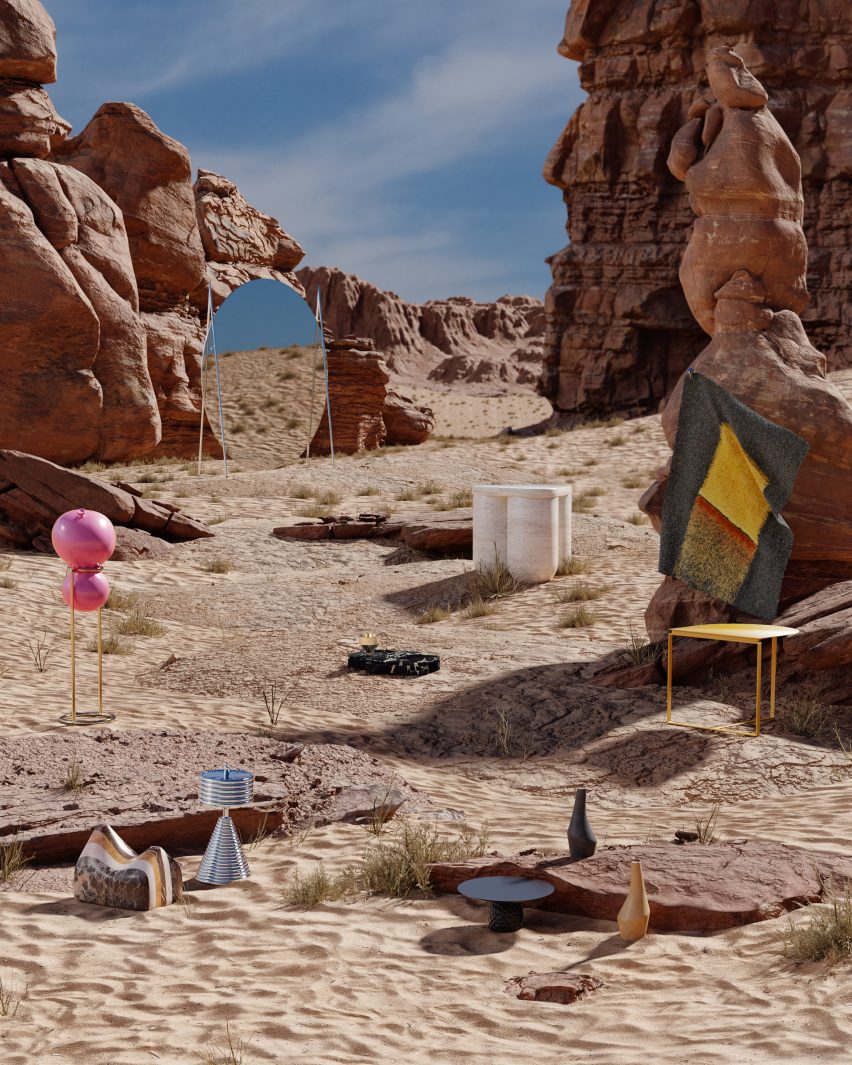
The collection was created with the support of the Office of Her Majesty Queen Rania Al Abdullah, the patron and supporter of Amman Design Week, and is presented in a series of digital collages that combine photos of the physical items with images of Jordan's iconic Wadi Rum desert.
Adorno is a Denmark-based gallery that often undertakes country-based collections and has previously featured Jordan's neighbour Lebanon.
It also once presented an exhibition of Swedish design that was characterised by being "un-Swedish".
Renders by Iñigo Inchaurraga and photography by Cielo Alejandra.